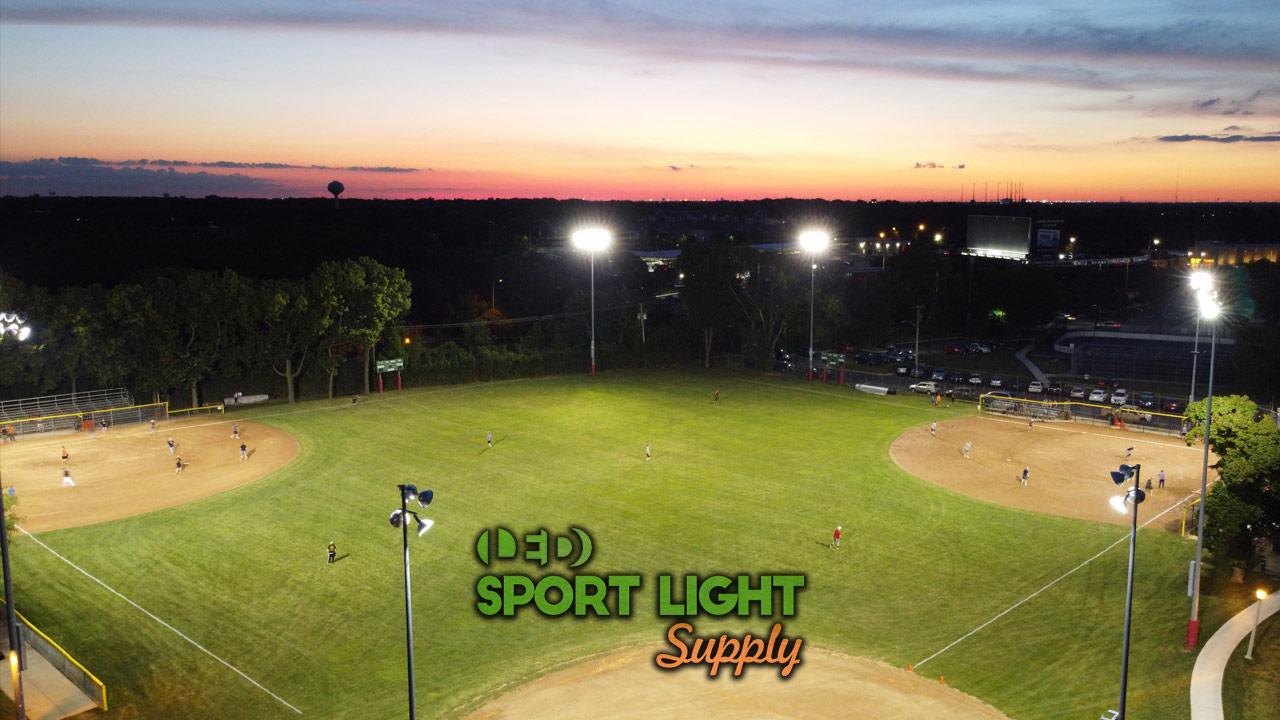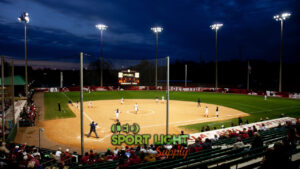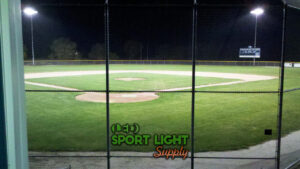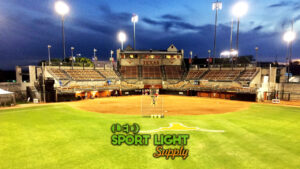Introduction
Definition of softball
Softball is a team sport played with a softball, which is a larger version of a baseball. The game is similar to baseball, but there are some key differences such as the size of the field, the distance between the bases, and the size and weight of the ball. Softball is typically played on a smaller field than baseball, with a diamond-shaped field that measures 60 feet between the bases. The ball is also larger and softer than a baseball, and the pitcher throws underhand rather than overhand. Softball can be played by both men and women and is popular at the amateur, collegiate, and professional levels. It is also a popular sport in high schools and youth leagues.
Importance of proper lighting in softball
Proper lighting is crucial for the safety and enjoyment of softball players and spectators. Adequate lighting allows players to see the ball and field clearly, which is essential for making plays and avoiding injuries. It also allows for a more pleasant and enjoyable viewing experience for spectators.
Poor lighting can lead to accidents and injuries on the field. If the lighting is too dim, players may not be able to see the ball or each other clearly, leading to collisions and other accidents. In addition, poor lighting can make it difficult for umpires to make accurate calls, which can lead to disputes and frustration among players and coaches.
Proper lighting also enhances the overall aesthetics of the game. Bright and well-balanced lighting can make the field and players look more vibrant and attractive, which is especially essential for televised games and other high-profile events.
The History of Softball Field Lighting
Early days of softball
The game of softball has its roots in baseball, which has a long and storied history dating back to the 1800s. Softball, however, is a relatively new sport, with its origins tracing back to the late 1800s and early 1900s.
The exact origins of softball are somewhat disputed, but it is generally believed that the game was developed in Chicago in 1887. According to one legend, a group of men were playing baseball indoors during the winter and used a boxing glove as a makeshift ball. The glove was too soft to be hit very far, so they shortened the distance between the bases and started playing a new game that they called “indoor baseball.”
Over the next few decades, the game of softball continued to evolve and spread in popularity. In 1933, the first organized softball league was formed in Chicago, and the first national softball tournament was held in 1936. The game continued to grow in popularity over the years, with the formation of various amateur, collegiate, and professional leagues around the world. Today, softball is played by millions of people of all ages and is a popular Olympic sport.
Evolution of lighting technology
The evolution of lighting technology has played a significant role in the development of softball as a sport. In the early days of the game, softball fields were often lit with a combination of natural light and incandescent bulbs. These early lighting systems were relatively basic and provided limited illumination, which could be a challenge for players and spectators.
As lighting technology advanced, newer and more efficient lighting systems were developed. Fluorescent bulbs and metal halide lamps became popular choices for illuminating softball fields, as they provided brighter and more consistent lighting than incandescent bulbs. These newer lighting systems also had longer lifespans, which made them more cost-effective and easier to maintain.
In recent years, LED lighting has become the preferred choice for many softball fields due to its energy efficiency and long lifespan. LED lighting is also highly customizable, with a wide range of color temperatures and brightness levels available. These features make LED lighting well-suited for illuminating softball fields and other sporting facilities.
Current Softball Field Lighting Standards
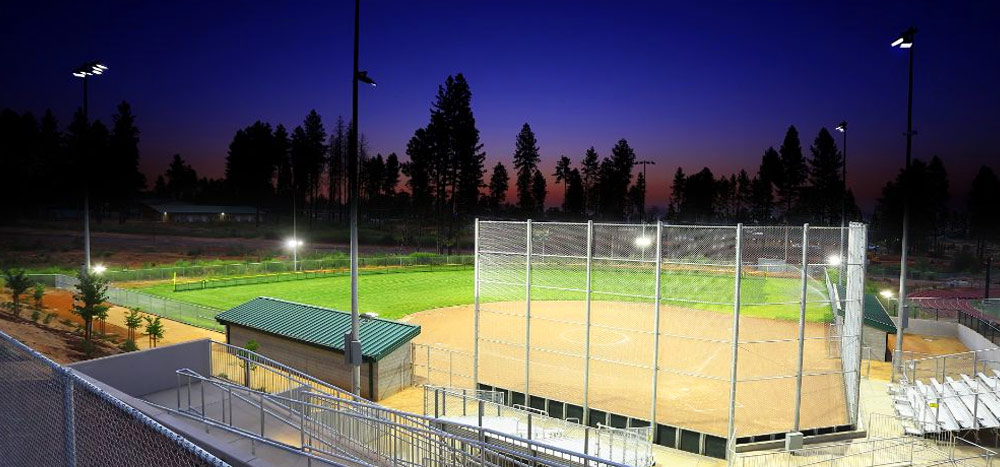
National Governing Body (NGB) regulations
A National Governing Body (NGB) is an organization that is responsible for the development and promotion of a particular sport within a specific country. In the United States, the National Governing Body for softball is USA Softball, which is the national governing body for the sport as recognized by the United States Olympic Committee (USOC). USA Softball is responsible for setting rules and regulations for the sport of softball in the United States, including lighting standards for softball fields.
USA Softball has established specific lighting requirements for softball fields based on the level of play. For example, USA Softball recommends a minimum of 50 footcandles of light for recreational softball, 75 footcandles for high school and collegiate play, and 100 footcandles for professional play. These recommendations are based on the size of the field and the distance between the bases, as well as the level of play and the desired level of visibility for players and umpires.
In addition to these recommendations, USA Softball also has specific guidelines for the placement and orientation of lights on the field. These guidelines help to ensure that the lighting is evenly distributed and does not create shadows or glare that could affect visibility or safety.
The National Governing Body regulations for softball field lighting are designed to ensure that the game is played safely and fairly at all levels of play.
International Softball Federation (ISF) regulations
The International Softball Federation (ISF) is the international governing body for the sport of softball. The ISF is responsible for setting rules and regulations for the sport at the international level, including lighting standards for softball fields.
The ISF has established specific lighting requirements for softball fields based on the level of play. For example, the ISF recommends a minimum of 50 footcandles of light for recreational softball, 75 footcandles for high school and collegiate play, and 100 footcandles for professional play. These recommendations are based on the size of the field and the distance between the bases, as well as the level of play and the desired level of visibility for players and umpires.
In addition to these recommendations, the ISF also has specific guidelines for the placement and orientation of lights on the field. These guidelines help to ensure that the lighting is evenly distributed and does not create shadows or glare that could affect visibility or safety.
The International Softball Federation regulations for softball field lighting are designed to ensure that the game is played safely and fairly at all levels of play.
Professional softball leagues
Professional softball leagues are organized leagues that feature highly skilled players who are paid to compete at the highest level of the sport. These leagues are typically organized and governed by a professional organization or governing body, and they may have their own rules and regulations for lighting standards on the field.
There are several professional softball leagues around the world, including the National Pro Fastpitch (NPF) in the United States and the Japan Professional Softball League (JPSL) in Japan. These leagues typically have strict lighting requirements that are designed to ensure the safety and enjoyment of players and spectators.
For example, the NPF recommends a minimum of 100 footcandles of light for professional softball games. This is a higher level of lighting than is typically recommended for amateur or collegiate play, as professional players are expected to perform at a higher level and need better visibility in order to make plays and avoid injuries.
In addition to these lighting requirements, professional softball leagues may also have specific guidelines for the placement and orientation of lights on the field. These guidelines help to ensure that the lighting is evenly distributed and does not create shadows or glare that could affect visibility or safety.
Factors to Consider When Choosing Softball Field Lighting
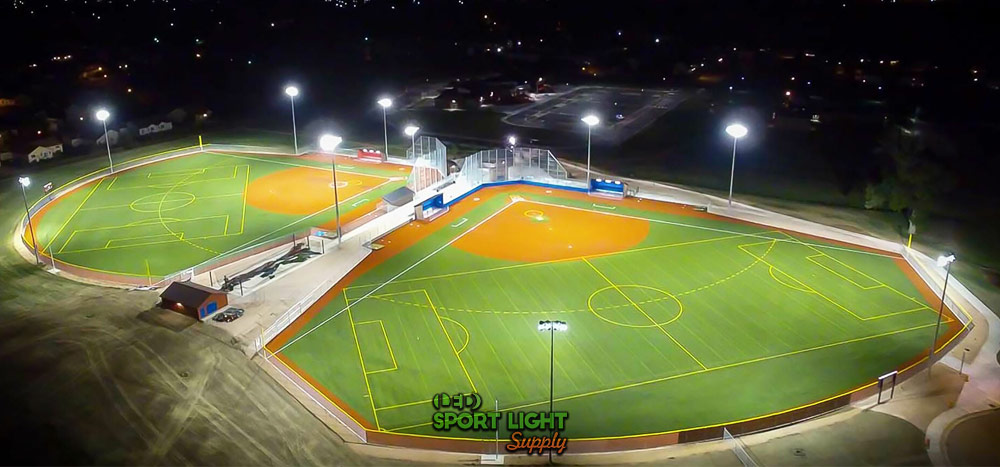
Brightness
Brightness is an essential factor to consider when choosing lighting for a softball field. Brightness refers to the amount of light that is emitted by a light source and is typically measured in units called lux or footcandles. The higher the lux or footcandles, the brighter the light will be.
Adequate brightness is essential for the safety and enjoyment of players and spectators. If the lighting is too dim, players may have difficulty seeing the ball and field clearly, which can lead to accidents and injuries. In addition, poor lighting can make it difficult for umpires to make accurate calls, which can lead to disputes and frustration among players and coaches.
On the other hand, overly bright lighting can create glare and shadows that can affect visibility and make the game less enjoyable for players and spectators. Therefore, we should strike a balance between adequate brightness and avoidable glare and shadows.
In general, the brightness of softball field lighting should be appropriate for the level of play. For example, the National Governing Body (NGB) for softball in the United States recommends a minimum of 50 footcandles of light for recreational softball, 75 footcandles for high school and collegiate play, and 100 footcandles for professional play. These recommendations are based on the size of the field and the distance between the bases, as well as the level of play and the desired level of visibility for players and umpires.
Color temperature
Color temperature is a measure of the hue of a light source, and it is expressed in units called kelvins (K). The color temperature of a light source refers to the perceived warmth or coolness of the light, with lower color temperatures appearing warmer and higher color temperatures appearing cooler.
For softball fields, we can choose a lighting system with a color temperature that is appropriate for the level of play and the desired viewing experience. For example, some people prefer a warmer color temperature (e.g., 2700K-3000K) for recreational play, as it can create a more relaxed and comfortable atmosphere. For high-level play, such as college or professional games, a cooler color temperature (e.g., 4000K-5000K) may be preferred, as it can provide better visibility and a more vibrant and energetic atmosphere.
We should consider the impact of the color temperature on the appearance of the players and the field. A warmer color temperature may make the players and field look softer and more natural, while a cooler color temperature may make them look more vibrant and energetic.
LED vs. metal halide
LED (light-emitting diode) and metal halide are two types of lighting technologies that are commonly used for illuminating softball fields. Both technologies have their own advantages and disadvantages, and the best choice for a particular application will depend on the specific needs and requirements of the field.
LED lighting is a newer technology that has become increasingly popular in recent years due to its energy efficiency and long lifespan. LED lights are highly efficient, using about 75% less energy than traditional incandescent bulbs and lasting up to 50,000 hours or more. LED lights also produce very little heat, which can be beneficial in hot weather. In addition, LED lights are highly customizable, with a wide range of color temperatures and brightness levels available.
Metal halide lighting is a more traditional technology that has been used for many years to illuminate sports fields and other large outdoor areas. Metal halide lamps provide bright and consistent lighting and have a relatively long lifespan, but they are less energy efficient than LED lights and produce more heat. Metal halide lamps also have a higher upfront cost and require more maintenance than LED lights.
LED lighting and metal halide lighting both have their own strengths and weaknesses, and the best choice will depend on the specific needs and requirements of the field. LED lighting may be a more energy-efficient and cost-effective choice in the long run, while metal halide lighting may provide brighter and more consistent lighting for high-level play.
Maintenance
Maintenance issue can have a significant impact on the overall cost and performance of the lighting system.
Different lighting technologies have different maintenance requirements, and we can choose a system that is easy to maintain and has a long lifespan. For example, LED lighting is generally considered to be low-maintenance, as it has a long lifespan and produces very little heat, which can reduce the risk of failure. LED lights also do not require frequent bulb changes, which can save time and money.
On the other hand, traditional lighting technologies such as metal halide lamps require more maintenance, as they have a shorter lifespan and are more prone to failure due to heat and other factors. Metal halide lamps also require more frequent bulb changes, which can be costly and time-consuming.
In addition to the maintenance requirements of the lighting system itself, we need to consider the maintenance needs of the field and any other supporting infrastructure, such as electrical systems and poles. Proper maintenance can help to ensure the safety and reliability of the lighting system and reduce the risk of downtime or failures.
Cost
Cost is a critical factor to consider when choosing lighting for a softball field, as it can have a significant impact on the overall budget and long-term financial performance of the field.
The cost of a lighting system will depend on a number of factors, including the type of lighting technology, the size and layout of the field, and the desired level of brightness and color temperature. For example, LED lighting is generally more expensive upfront than traditional technologies such as metal halide, but it is typically more energy efficient and has a longer lifespan, which can result in lower overall operating costs.
While a cheaper lighting system may have a lower upfront cost, it may have higher operating costs due to higher energy usage or more frequent maintenance requirements. On the other hand, a more expensive lighting system may have a higher upfront cost, but it may have lower operating costs and a longer lifespan, which can result in a better return on investment over the long term.
In addition to the cost of the lighting system itself, it is also critical to consider any additional costs associated with the field and supporting infrastructure, such as electrical systems and poles. These costs can have a significant impact on the overall budget and financial performance of the field.
Future developments in softball field lighting technology
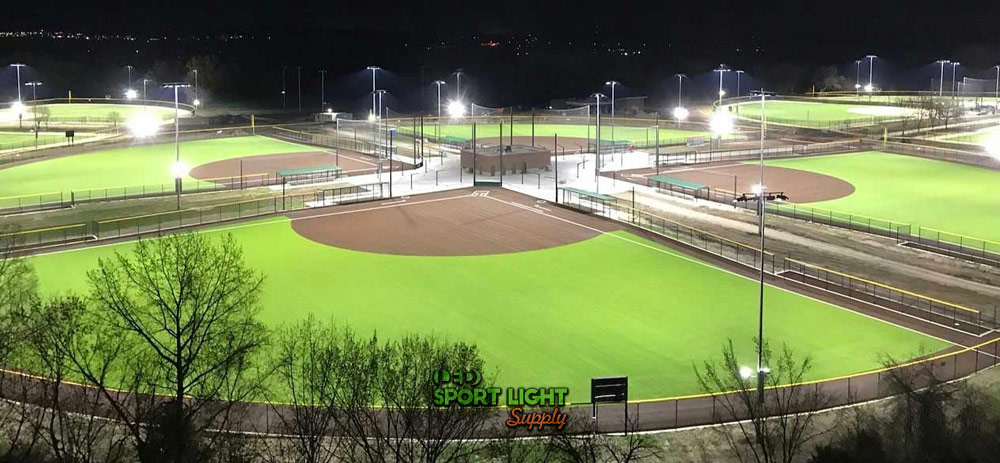
The field of lighting technology is constantly evolving, and there are likely to be many exciting developments in the future of softball field lighting. Some potential future developments in this area include:
Increased energy efficiency
Lighting technology is becoming increasingly energy efficient, and it is likely that future softball field lighting systems will use even less energy than current systems. This could lead to significant cost savings for field owners and operators.
Advanced controls and automation
Lighting controls and automation systems are becoming more sophisticated, and it is likely that future softball field lighting systems will be more responsive and easier to control. For example, lighting systems may be able to automatically adjust the brightness and color temperature based on the time of day or the level of play.
Improved visibility and safety
Future lighting systems may be designed to provide even better visibility and safety for players and spectators. This could include the use of advanced optics or specialized lighting configurations to reduce shadows and glare.
Enhanced aesthetics
Lighting technology is becoming increasingly customizable, and it is likely that future softball field lighting systems will be able to create a wider range of lighting effects and atmospheres. This could include the use of different colors and patterns to create a more immersive and engaging viewing experience.
Conclusion
In summary, proper lighting is essential for the safety and enjoyment of softball players and spectators. The history of softball field lighting has seen the evolution of lighting technology from basic incandescent bulbs to more efficient and customizable LED lighting. The National Governing Body (NGB) and the International Softball Federation (ISF) have established specific lighting requirements for softball fields based on the level of play. Professional softball leagues may also have their own lighting standards.
When choosing lighting for a softball field, we should consider factors such as brightness, color temperature, LED vs. metal halide, maintenance, and cost. Brightness determines the intensity of the light and affects visibility and safety. Color temperature refers to the hue of the light and can impact the appearance of the players and field. LED lighting and metal halide lighting are two common technologies that have their own advantages and disadvantages. Maintenance can affect the overall cost and performance of the lighting system. Cost is also a key factor, as it can impact the overall budget and financial performance of the field.
Softball field lighting standard is an essential consideration when designing and maintaining a softball field, and it is essential to choose a lighting system that provides sufficient brightness, appropriate color temperature, and low maintenance while also considering cost and long-term financial performance.

